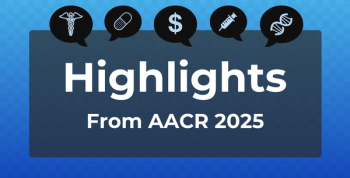
Researchers Identify New Cancer Cell That Is Key to Relapse in AML
Cancer-regenerating cells that arise after chemotherapy have been identified as a new type of cancerous cell that is responsible for the return of acute myeloid leukemia (AML) after remission.
Cancer-regenerating cells that arise after chemotherapy have been identified as a new type of cancerous cell that is responsible for the return of acute myeloid leukemia (AML) after remission.
A study
Relapse rates in AML after initial treatment range from 40% to 50%, according to Mick Bhatia, PhD, the lead author and director of the McMaster University Stem Cell and Cancer Research Institute, explained that the common belief had been that relapse was caused by dormant cancer stem cells that resisted chemotherapy treatment. It had been difficult to find the cells responsible for relapse because chemotherapy treatment can be so destructive that leftover leukemia cells go undetected.
“Chemotherapy is not entirely specific and destroys a lot of other tissues, making the patient’s body a difficult place to do the detective work to find cells responsible for relapse,” Bhatia
Using a model of patient leukemic disease in mice, the researchers at McMaster were able to identify when the disease becomes highly regenerative, which sets the stage for eventual relapse. They could distinguish the surviving human leukemic cells from the nondiseased mouse cells.
The new understanding of leukemic regeneration will allow physicians to introduce additional drugs in combination with chemotherapy in order to take advantage of chemotherapy’s benefits while still targeting these altered cancer cells.
“Chemotherapy has increased the number of years cancer patients survive, but if you look at the overall death rates for people with leukemia, they are relatively unchanged,” said Bhatia. “The problem is that the tumor comes back. It’s the relapse, then, that kills the patients. Our goal is to prevent the relapse altogether.”
Reference
Boyd AL, Aslostovar L, Reid J, et al. Identification of chemotherapy-induced leukemic-regenerating cells reveals a transient vulnerability of human AML recurrence. Cancer Cell. 2018;34(3):483-498. doi: 10.1016/j.ccell.2018.08.007.
Newsletter
Stay ahead of policy, cost, and value—subscribe to AJMC for expert insights at the intersection of clinical care and health economics.









































